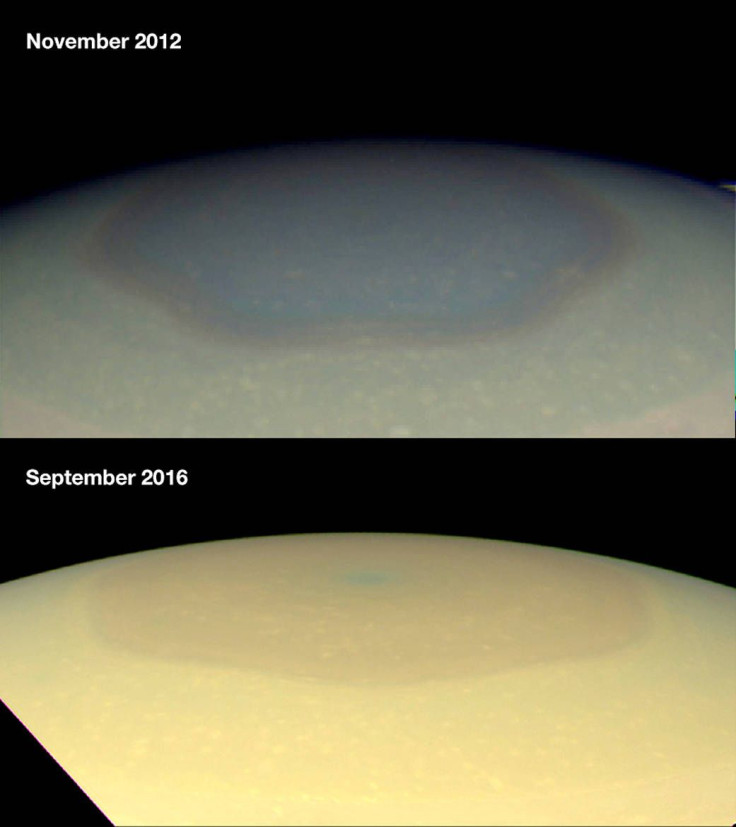NASA Saturn Discovery: Changing North Pole Colors Pictured By Cassini Probe [Photos]

Over the past four years, the six-sided jet stream at Saturn’s north pole known as the hexagon has changed color and NASA wants to figure out what’s happening.
Back in 2012, the Cassini spacecraft on a mission to Saturn swooped by the region and snapped a photo that appeared to be blue. By the time it came back for another look this year, the region appeared golden in color from the wide-angle camera on the ship.
NASA said Tuesday that the perceived changes are likely the result of the production of photochemical hazes — known as smog on Earth — in the atmosphere as the pole moves closer to the summer solstice this May.

Researchers said via the NASA release that the six-sided jet stream may act as a barrier that keeps outside haze particles from getting to the North Pole. From November 1995 until August 2009, the atmosphere was cleared of the aerosols produced by chemical reactions to sunlight. Since August 2009, the pole’s equinox, the region has been hit by continuous sunshine, leading to the increasingly hazy atmosphere there as particles interact with the sun and create the aerosols.
Sighted from above, Saturn’s North Pole has a swirling center surrounded by a large hexagon, as seen in the photograph below.
NASA’s Cassini spacecraft is a joint venture between NASA and the European Space Agency and the Italian Space Agency and is expected to finish up operations next year after a daring final mission in which scientists hope to measure the planet’s gravitational and magnetic fields while sampling the atmosphere of Saturn. The mission was launched in 1997 and has been responsible for dropping a probe onto Saturn’s largest moon, Titan, in 2005, among other discoveries.
© Copyright IBTimes 2024. All rights reserved.












